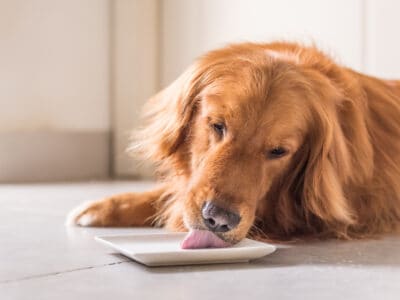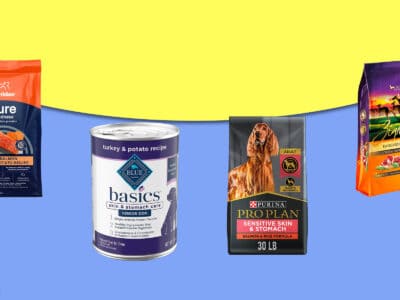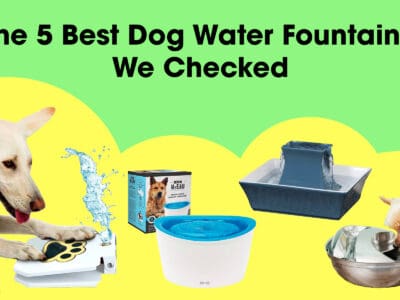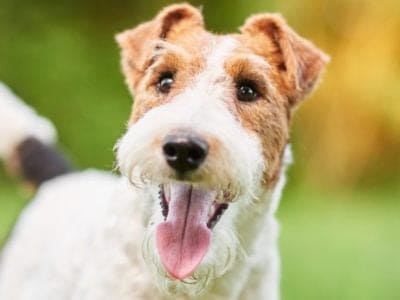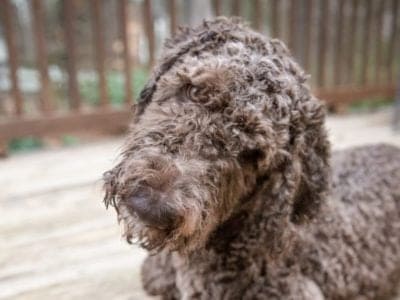Flat-Coated Retriever
.jumbotron {
background-image: url(“https://a-z-animals.com/media/2018/09/Flat-coated-retriever-header-400×300.jpg”);
}
}
@media only screen and (min-width: 641px) and (max-width: 920px) {
.jumbotron {
background-image: url(“https://a-z-animals.com/media/2018/09/Flat-coated-retriever-header-470×370.jpg”);
}
}
@media only screen and (min-width: 921px) {
.jumbotron {
background-image: url(“https://a-z-animals.com/media/2018/09/Flat-coated-retriever-header.jpg”);
}
}
Flat-Coated Retriever
Canis lupus
Flat-Coated Retrievers are one of the oldest retriever breeds; they were bred beginning in the 19th century.
Flat-Coated Retriever Scientific Classification
- Kingdom
- Animalia
- Phylum
- Chordata
- Class
- Mammalia
- Order
- Carnivora
- Family
- Canidae
- Genus
- Canis
- Scientific Name
- Canis lupus
Read our Complete Guide to Classification of Animals.
Flat-Coated Retriever Conservation Status
Flat-Coated Retriever Facts
- Fun Fact
- Flat-Coated Retrievers are one of the oldest retriever breeds; they were bred beginning in the 19th century.
- Diet
- Omnivore
- Common Name
- Flat-Coated Retriever
.checked {
color: yellow;
}
Flat-Coated Retriever as a Pet:
- General Health
- Energy Level
- Shedability
- Trainability
- Intelligence
- Tendency to Chew
- Size
- Family and kid friendliness
- Yappiness / Barking
- High
- Separation Anxiety
- Moderate
- Preferred Temperature
- Average climate
- Exercise Needs
- High
- Friendly With Other Dogs
- High
- Pure bred cost to own
- $1,500 to $2,500
- Dog group
- Sporting
- Male weight
- 60-70 lbs
- Female weight
- 60-70 lbs
This post may contain affiliate links to our partners like Chewy, Amazon, and others. Purchasing through these helps us further the A-Z Animals mission to educate about the world’s species..

Spiders that fly! Fish that walk! And 1000+ more incredible animals. Discover them all for FREE
.photo-gallery {
–margin: 0px auto 0px;
–padding: 0px 0px 0px 0px;
}
.gallery-link {
background-image: url(“https://a-z-animals.com/media/2018/09/Flat-coated-retriever-lying-down-1024×535.jpg”);
background-repeat: no-repeat;
background-size: cover;
background-position: center;
height: 500px;
justify-content: center;
text-align: center;
align-items: center;
display: flex;
border: 2px solid #000;
}
.gallery-link img {
height: 50%;
}
@media only screen and (max-width: 768px) {
.gallery-link {
height: 300px !important;
}
}
View all of the Flat-Coated Retriever images!
The Flat-Coated Retriever has a very happy and outgoing temperament.
They make a great family pet and are great with children. Flat-Coated Retrievers are a large dog breed that may be black or liver-colored in appearance. They were originally bred in England to be a gundog in the mid-1800s. Unlike other breeds that had one main specialty, Flat-Coated Retrievers were bred to retrieve fowl from both land and water.
See all of our expert product reviews.
Owning a Flat-Coated Retriever: 3 Pros and Cons
| Pros! | Cons! |
|---|---|
| Great family dog: Flat-Coated Retrievers make an excellent family dog. They are very friendly and playful. | Higher exercise needs: Flat-Coated Retrievers have greater exercise requirements than some other breeds. |
| Easy to groom: A Flat-Coated Retriever only needs to be brushed about once a week to maintain its coat. | Can be jumpy: If not properly trained, this breed can be very jumpy. |
| Easy to train: Flat-Coated Retrievers are intelligent dogs that are relatively easy to train. | Shorter Lifespan: A Flat-Coated Retriever only has an 8- to 10-year lifespan, which is shorter than many other breeds. |
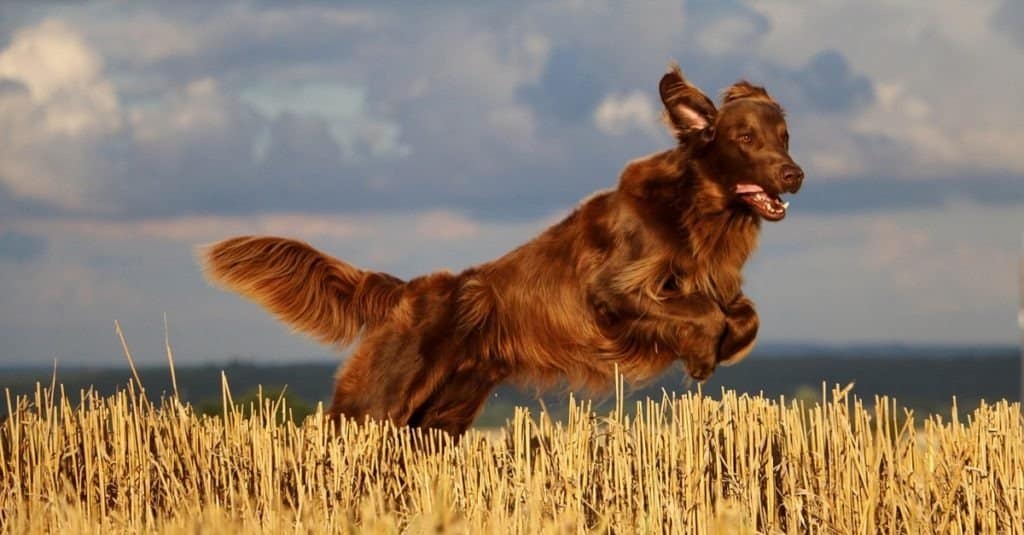
Bianca Grueneberg/Shutterstock.com
button.pulse {
transform: scale(1); animation: pulse 2s infinite;
box-shadow: 0 0 0 0 rgba(11, 247, 25, 1);
}
@keyframes pulse {
0% { transform: scale(0.90); box-shadow: 0 0 0 0 rgba(11, 247, 25, 0.5); }
60% { transform: scale(1); box-shadow: 0 0 0 15px rgba(11, 247, 25, 0); }
100% { transform: scale(0.90); box-shadow: 0 0 0 0 rgba(11, 247, 25, 0); }
}
Flat-Coated Retriever Size and Weight
Flat-Coated Retrievers are a large-sized dog breed. Males and females both typically weigh between 60 and 70 inches. Males are slightly taller with a height between 23 and 24.5 inches compared to a female’s height of 22 to 23.5 inches. Three-month-old puppies generally weigh between 21 and 29 pounds. Six-month-old puppies weigh between 39 and 54 pounds. Flat-Coated Retrievers finish growing between the ages of 16 and 19 months.
| Height (Male) | 23 inches to 24.5 inches |
| Height (Female) | 22 inches to 23.5 inches |
| Weight (Male) | 60 pounds to 70 pounds |
| Weight (Female) | 60 pounds to 70 pounds |
Flat-Coated Retriever Common Health Issues
Before you purchase or adopt a Flat-Coated Retriever, it is important to learn about the potential health concerns that this breed may face. Being aware of these can help you learn when you’ll want to seek out help from your dog’s veterinarian.
One hereditary problem that Flat-Coated Retrievers may develop is hip dysplasia. This is a condition where the joints don’t form properly and rub against each other as the dog walks. Over time, this can cause a lot of pain and discomfort and may require surgery.
Flat-Coated Retrievers may also suffer from patellar luxation. This is a condition where the patella, or kneecap, slips into and out of place as the dog walks. This can cause their legs to become lame and may need surgery to be fixed.
Health and Entertainment for your Flat-Coated Retriever
See all of our expert product reviews.
Bloat is another potential issue to look out for with Flat-Coated Retrievers. Bloat refers to a dog’s stomach twisting on itself which prevent the dog from being able to expel any air and causes their stomach to bloat up. The causes of bloat are not completely understood, but there is a connection between eating a large meal and exercising vigorously right after, so try to avoid this scenario with your dog. If you suspect your dog is suffering from bloat, seek veterinary care immediately.
In summary, here are some of the more common health issues that a Flat-Coated Retriever may face:
- Hip dysplasia
- Patellar luxation
- Bloat
Flat-Coated Retriever Temperament and Behavior
Flat-Coated Retrievers have a very cheerful and outgoing personality. They can make a good family pet because of many of their personality traits, such as their desire to please their owners and how affectionate they are. In most cases, Flat-Coated Retrievers do well with other dogs and cats as well.
It is important to make sure a Flat-Coated Retriever gets enough personality so they don’t become bored and engage in destructive behaviors.
How To Take Care of a Flat-Coated Retriever
As you prepare to take care of your Flat-Coated Retriever, keep in mind that there are specific considerations you’ll need to make for this dog breed. Think about their temperament, dietary needs, activity needs, potential health concerns, and other factors as you plan for their care.
The Best Dog Food for Flat-Coated Retrievers
Most adult Flat-Coated Retrievers will need between 3.5 and 4.5 cups of food each day. Their food should be portioned out into two meals. The right amount for each dog will vary based on their activity level, age, weight, health concerns, and more. Check with your dog’s veterinarian to determine how much food he or she should eat.
To prevent bloat, monitor your dog’s food intake to make sure they don’t scarf their food too fast or eat too close back-to-back with exercising.
Flat-Coated Retriever puppies have much smaller stomachs than adults. Because of this, they will require smaller, more frequent meals. When the puppies are between eight and 12 weeks, they should eat four times each day. Between the ages of three and six months, puppies should be fed three meals, and by the time they are six months, they can handle just two meals each day. Look for a high-quality puppy food that will meet the growing dog’s nutritional needs.
A-Z Animals believes the best dog food for Flat-Coated Retrievers is Wellness CORE Digestive Health Dry Dog Food with Wholesome Grains.
Since this breed can suffer from digestive problems, we think this digestion support recipe with probiotics and prebiotic fiber is a good option. The special, coated kibble is made from multiple types of fish, a natural source of glucosamine and chondroitin sulfate for the longevity of your Flat-Coated Retriever’s joints.
Follow the link below to find Wellness CORE Digestive Health dog food on amazon.
- Digestive Health Dog Food: This highly digestible, probiotic coated dog kibble is made with digestive enzymes, a blend of prebiotic fibers, and guaranteed levels of probiotics to support gut health for overall wellbeing
- Wellbeing From Within: With Omega 3 Fatty Acids, superfood pumpkin, papaya, and essential vitamins, CORE Digestive Health dog food supports overall immunity, vitality, a shiny coat, and healthy skin
- Find The Right Food: We offer a full range of foods to support your dog’s needs, including grained and grain free options, high protein dog foods and limited ingredient selections for food sensitivities
- A Lifetime Of Wellbeing: Each of our recipes is designed to support your pet through all life stages; Crafted to support strong immune systems, optimal energy and help maintain a healthy weight
- Wellness Nutrition: Created by nutritionists, veterinarians, and animal lovers, our recipes provide an ideal balance of nature’s finest ingredients, carefully selected to nourish and sustain your pet’s wellbeing
Flat-Coated Retriever Maintenance and Grooming
Flat-Coated Retrievers are relatively easy to groom and maintain. They do shed a good amount, so you’ll need to brush them about once each week using a metal comb. This will help remove any loose hairs or dirt from their coat.
Additionally, be sure to check and clean your Flat-Coated Retrievers ears to keep them clean and infection-free. Their teeth should also be brushed a few times each week and their nails should be trimmed to keep them from getting long and painful.
Flat-Coated Retriever Training
It will be very important to start training your Flat-Coated Retriever from an early age. This breed can get overly excited and jump a lot. They are also known for chewing. Early training using a method that stresses positive reinforcement works best for Flat-Coated Retrievers. It is also important to socialize your dog from an early age so they begin to learn how to act around other dogs, people, and different situations.
Flat-Coated Retriever Exercise
Daily exercise is a must with this breed. Take your dog out for a walk each day or find time to play with them to make sure their activity needs are met. They also enjoy participating in agility, obedience, and tracking events.
Puppies
As we shared above, Flat-Coated Retriever puppies have a much smaller stomach and need to eat smaller, more frequent meals than adults. Flat-Coated Retrievers are also a very orally-fixated breed, so you will want to begin training your dog not to chew as soon as you bring them home. It is also a good idea to remove anything from your space that could be hazardous if chewed by a puppy or that you don’t want to see ruined.
Before you bring home your new Flat-Coated Retriever puppy, make sure your home is set up and ready for his or her arrival. Purchase a dog bed, a collar and leash, some toys, food, and treats for your dog. Call your veterinarian to set up an appointment for a checkup right after you bring your new dog home.

Zuzule/Shutterstock.com
Flat-Coated Retrievers and Children
This breed is an excellent choice for those looking for a family dog. Flat-Coated Retrievers are very affectionate and tolerant towards children. They can make a great playmate for an older child. Younger children should be more closely supervised around a Flat-Coated Retriever simply because this breed is so happy and active and may accidentally knock down a small child.
Dogs similar to these Retrievers
Labrador Retrievers, Golden Retrievers, and Curly-Coated Retrievers are three breeds that are similar to the Flat-Coated Retriever.
- Labrador Retriever: Labrador Retrievers and Flat-Coated Retrievers look very similar in appearance. They can both have a black coat. Both breeds make a great family dog and are an active breed. Labrador Retrievers can make a good show dog. Flat-Coated Retrievers were bred to be a working dog and do not make a great show dog.
- Golden Retriever: Golden Retrievers and Flat-Coated Retrievers are both gundogs with a similar average weight (65 pounds for Flat-Coated Retrievers and 70 pounds for Golden Retrievers). Both breeds are also very intelligent and playful. Flat-Coated Retrievers are more likely to bark than Golden Retrievers and can make a better watchdog.
- Curly-Coated Retriever: Curly-Coated Retrievers are another large gundog, like the Flat-Coated Retriever. Both of these dog breeds are very affectionate and playful. As the name suggests, Curly-Coated Retrievers have a curlier coat than Flat-Coated Retrievers. However, both breeds may have a black or liver-colored coat.
Famous Retrievers
Over the years, there have been a few famous Flat-Coated Retrievers
- Blarney was H. Reginald Cooke’s Flat-Coated Retriever.
- Humphrey Bogart has a Flat-Coated Retriever.
Popular Names for Retrievers
Need a name for your new Flat-Coated Retriever? Look through the list below to find some great ideas.
- Dylan
- Smoky
- Jesse
- Buster
- Cody
- Gracie
- Princess
- Flora
- Cassie
- Maggie
Last update on 2022-07-06 / Affiliate links / Images from Amazon Product Advertising API
View all 62 animals that start with F
Flat-Coated Retriever FAQs (Frequently Asked Questions)
Are Flat Coat Retrievers herbivores, carnivores, or omnivores?
Flat Coat Retrievers are Omnivores, meaning they eat both plants and other animals.
What Kingdom do Flat Coat Retrievers belong to?
Flat Coat Retrievers belong to the Kingdom Animalia.
What class do Flat Coat Retrievers belong to?
Flat Coat Retrievers belong to the class Mammalia.
What phylum to Flat Coat Retrievers belong to?
Flat Coat Retrievers belong to the phylum Chordata.
What family do Flat Coat Retrievers belong to?
Flat Coat Retrievers belong to the family Canidae.
What order do Flat Coat Retrievers belong to?
Flat Coat Retrievers belong to the order Carnivora.
What type of covering do Flat Coat Retrievers have?
Flat Coat Retrievers are covered in hair.
What genus do Flat Coat Retrievers belong to?
Flat Coat Retrievers belong to the genus Canis.
What is an interesting fact about Flat Coat Retrievers?
Flat Coat Retrievers are game retrieving gun-dogs!
What is the scientific name for the Flat Coat Retriever?
The scientific name for the Flat Coat Retriever is Canis lupus.
How long does a Flat-Coated Retriever live?
The average life expectancy of a Flat-Coated Retriever is between 8 and 10 years.
How much does a Flat-Coated Retriever cost to own?
The cost to purchase a Flat-Coated Retriever from a breeder is typically between $1,500 and $2,500. More reputable breeders offering a higher pedigree of Flat-Coated Retrievers will charge higher amounts than other breeders. If you find a Flat-Coated Retriever to adopt from a shelter or a rescue group, it will cost a few hundred dollars, typically between $300 and $600. If you can’t find a purebred Flat-Coated Retriever at a shelter, you may be able to find a mix. Some popular Flat-Coated Retriever mixes include a Flat-Coated Retriever and Australian Shepherd mix, a Flat-Coated Retriever and Cocker Spaniel mix, and a Flat-Coated Retriever and Welsh Corgi mix.
Flat-Coated Retrievers will also need veterinary care, training food, treats, and supplies. Consider the cost of all of these items in addition to the cost of purchasing a Flat-Coated Retriever from a breeder or adopting one. Your first year owning the dog, you should budget between $1,000 and $1,500 to cover these expenses. The following years will be less expensive, but you’ll still want to budget between $500 and $1,000.
Are Flat-Coated Retrievers good family dogs?
Yes, Flat-Coated Retrievers can make an excellent family dog. This breed is very friendly with children and adults alike. They enjoy playing and spending time with their family and can be quite tolerant of younger children.
What is a Flat-Coated Retriever?
Flat-Coated Retrievers are gundogs who were bred to hunt game both on land and from the water. This breed is very friendly and outgoing. Flat-Coated Retrievers are a strong medium-sized dog that can have a black or liver-colored coat.
What is the difference between a Flat-Coated Black Retriever and a Labrador Retriever?
Flat-Coated Retrievers and Labrador retrievers look very similar and both may have a black coat. A Flat-Coated Retriever has a longer coat. Flat-Coated Retrievers may also have a liver-colored coat while Labrador Retrievers may have a chocolate or yellow coat. Both breeds are heavy shedders. Labrador Retrievers and Flat-Coated Retrievers are both good family dogs who love swimming.
Do Flat-Coated Retrievers shed a lot?
Yes, Flat-Coated Retriever shed a good amount. Their coat will need to be brushed once a week to keep the shedding controlled.
Sources
- American Kennel Club, Available here: https://www.akc.org/dog-breeds/flat-coated-retriever/
- Dogtime, Available here: https://dogtime.com/dog-breeds/flat-coated-retriever#/slide/1
- Wikipedia, Available here: https://en.wikipedia.org/wiki/Flat-coated_Retriever
- Petfinder, Available here: https://www.petfinder.com/dog-breeds/flat-coated-retriever/
- Doggie Designer, Available here: https://doggiedesigner.com/flat-coated-retriever/
- Cuteness, Available here: https://www.cuteness.com/blog/content/flat-coated-retrievers-vs-black-labs
- Animal Care Tip, Available here: https://animalcaretip.com/flat-coated-retriever-care-tips/



